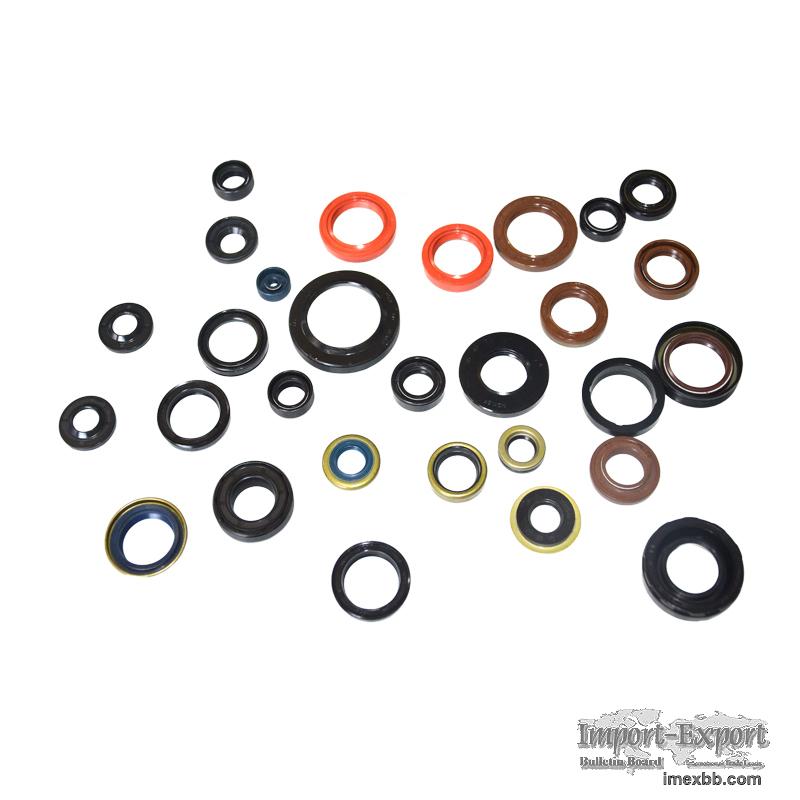 |
 |
Home > Offers to Sell > Industrial Machinery & Equipment > Other Machinery & Parts > Others
| Contact: | junyingliu |
|---|---|
| Company: | Xingtai Shanfeng special rubber products Co., Ltd |
| Hetou Industrial Zone, Renze District, Xingtai City, Hebei Province | |
| Xingtai City, Hebei | |
| China | |
| Phone: | 18713908608 |
| E-Mail: | |
| Date/Time: | 9/27/24 1:27 GMT |
China Wholesales High Temperature Oil Seal NBR FKM PTFE Oil Seals
Oil seals are essential components in mechanical systems, designed to
retain lubricants while preventing contamination. With various types available,
selecting the appropriate oil seal can significantly impact the performance and
longevity of machinery. This article delves into the common types of oil seals
and provides guidance on how to choose the right one for specific applications.
1. Types of Oil Seals
Oil seals come in various designs, each tailored for specific applications
and environments. Here are some common types:
· Single-Lip Oil Seals: These are the most basic form of oil seals,
consisting of a single sealing lip that contacts the shaft. They are suitable
for low-pressure applications and are widely used in household appliances and
automotive parts.
· Double-Lip Oil Seals: Featuring two sealing lips, these seals offer
enhanced protection against contaminants. They are ideal for applications where
dirt, water, or other impurities might compromise the sealing environment, such
as in heavy machinery and construction equipment.
· Spring-Loaded Oil Seals: These seals incorporate a spring that exerts
continuous pressure on the sealing lip, ensuring a tight fit against the shaft.
This type is particularly effective in high-speed applications, where
maintaining a proper seal is crucial.
Mechanical Oil Seals: Although slightly different from traditional oil
seals, mechanical seals are often used in rotating equipment to prevent leaks.
They consist of two flat surfaces that press against each other, providing a
robust sealing solution in high-pressure situations.
2. Factors to Consider When Selecting an Oil Seal
Choosing the right oil seal involves evaluating several key factors:
· Operating Conditions: Consider the temperature, pressure, and speed at
which the oil seal will operate. Different materials are suited for varying
temperature ranges and pressures, so selecting a seal designed for those
conditions is essential.
· Material Compatibility: The material of the oil seal must be compatible
with the lubricant and the environment. For example, nitrile rubber is commonly
used for petroleum-based oils, while fluorocarbon seals are better suited for
aggressive chemicals and high temperatures.
· Shaft Surface Finish: The surface finish of the shaft can significantly
impact the performance of the oil seal. A smooth, polished surface is ideal for
achieving an effective seal and minimizing wear on the sealing lip.
· Installation Environment: Consider the level of contamination the seal
will be exposed to. In environments with dust and moisture, double-lip seals or
those with additional protective features may be necessary.
Selecting the right oil seal is critical for ensuring the reliability and
efficiency of mechanical systems. By understanding the different types of oil
seals and the factors influencing their performance, engineers and maintenance
professionals can make informed decisions that enhance machinery operation and
lifespan.
Minimum Order: 1000 pieces
SOURCE: Import-Export Bulletin Board (https://www.imexbb.com/)
Similar Products:Not exactly what you are looking for? Post an Offer to Buy!
![]()
© 1996-2010 IMEXBB.com. All rights reserved.
|
|
|





